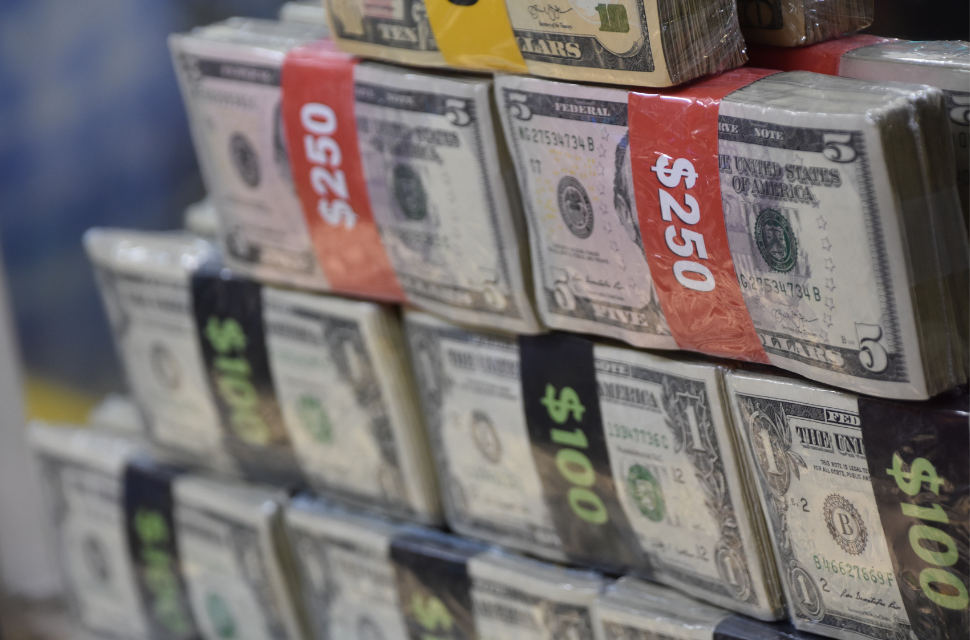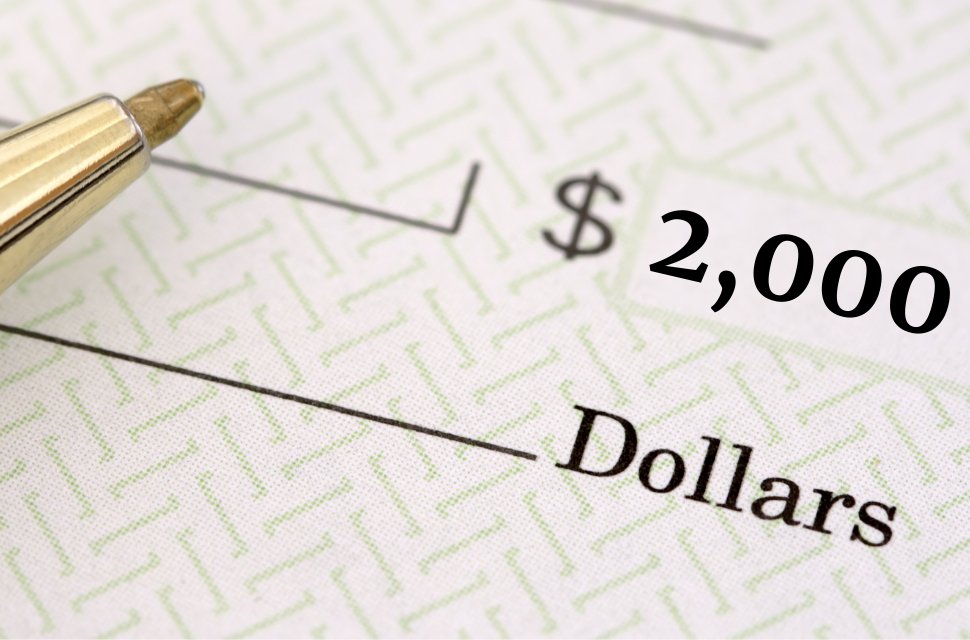
Donald Trump is a person who glories in his own ignorance. He seems to know little about anything and clearly doesn’t care. Any evidence that contradicts his pronouncements is simply “FAKE NEWS.”
Thomas Friedman seems to have the same attitude as he makes grand pronouncements about the economy that are transparently absurd. I discovered this in his latest column, which carried the promising headline, “Made in the U.S.A.: Socialism for the Rich. Capitalism for the Rest.”
It turns out that the gist of Friedman’s “socialism for the rich” is low-interest rates. Following Ruchir Sharma, chief global strategist at Morgan Stanley Investment Management, Friedman is upset that we don’t have recessions and have more businesses fail. I am not kidding, he literally says this:
“Meanwhile, he added, as governments keep stepping in to eliminate recessions, downturns no longer play their role of purging the economy of inefficient companies, and recoveries have grown weaker and weaker, with lower productivity growth.”
This statement is bizarre for two reasons. First, productivity growth has been slow since 1973, with the exception of the decade from 1995 to 2005. Interest rates were actually quite high in the 1970s and 1980s, so it seems pretty difficult to blame slow productivity growth on low-interest rates. We also had a very bad recession in both the decade of the 1970s and 1980s. That didn’t seem to do much to boost productivity growth.
The other problem is that productivity has actually soared in the last year, rising 4.0 percent from the third quarter of 2019 to the third quarter of 2020. That’s against a long term trend of growth of less than 1.5 percent. I am always the first to point out that these data are highly erratic, and the last year was obviously an extraordinary one, but it is a bit odd to be yelling about weak productivity growth at a time when we are seeing an extraordinary boom in productivity.
Other parts of the piece make equally little sense. It’s true that low-interest rates generally support higher stock prices, but they have also allowed millions of people to pay less money on their home mortgages and car loans. We have millions of very middle-class homeowners who were able to knock 1-2 percentage points off their mortgage when they refinanced. For someone with a $200,000 mortgage, this comes to $2,000 to $4,000 a year. Maybe that isn’t real money to Thomas Friedman, but that is a very big deal to a family earning $60,000 or $70,000 a year. (Btw, if we are upset that high stock prices lead to greater inequality of wealth, how come no one celebrates the reduction in inequality when stock prices fall?)
Lower rates also allowed for millions of people to buy cars, which also provided a huge boost to the auto industry, creating jobs for workers in the auto industry. And, lower rates allowed for state and local governments to borrow at lower costs, freeing up money for a wide range of social services. Small businesses were also able to borrow at lower rates, either to expand or just survive the pandemic. None of that sounds like socialism for the rich to me.
And, Friedman also gives us this Trumpian gem of illogic:
“Now that so many countries, led by the U.S., have massively increased their debt loads, if we got even a small burst of inflation that drove interest on the 10-year Treasury to 3 percent from 1 percent, the amount of money the U.S. would have to devote to debt servicing would be so enormous that little money might be left for discretionary spending on research, infrastructure or education — or another rainy day.”
Hmmm, the amount devoted to debt service “would be so enormous that little money might be left for discretionary spending on research, infrastructure or education — or another rainy day.”
Let’s bring in Mr. Arithmetic here. Our debt to GDP ratio is roughly 100 percent, give or take a few percentage points. Let’s suppose that the interest rate suddenly rose to 3.0 percent. That would mean that the amount of interest we were paying was equal to 3 percent of GDP. That would make the burden of our debt service a bit less than it was in the early 1990s, which folks may recall was a very prosperous decade.
Furthermore, the interest on our bonds won’t jump all at once, since we have locked in low rates on the long-term bonds we have already issued. Also, more rapid inflation means that the debt to GDP ratio will be falling. Ignoring the effect of compounding, if we see inflation that is two percentage points higher than expected for a decade, that means nominal GDP will be 20 percent higher at the end of this period, and the debt to GDP ratio and the interest burden will be 20 percent lower.
In short, Friedman and his source at Morgan Stanley have no case. But in the Trumpian section of the New York Times, evidence and logic have no place.
Donald Trump is a person who glories in his own ignorance. He seems to know little about anything and clearly doesn’t care. Any evidence that contradicts his pronouncements is simply “FAKE NEWS.”
Thomas Friedman seems to have the same attitude as he makes grand pronouncements about the economy that are transparently absurd. I discovered this in his latest column, which carried the promising headline, “Made in the U.S.A.: Socialism for the Rich. Capitalism for the Rest.”
It turns out that the gist of Friedman’s “socialism for the rich” is low-interest rates. Following Ruchir Sharma, chief global strategist at Morgan Stanley Investment Management, Friedman is upset that we don’t have recessions and have more businesses fail. I am not kidding, he literally says this:
“Meanwhile, he added, as governments keep stepping in to eliminate recessions, downturns no longer play their role of purging the economy of inefficient companies, and recoveries have grown weaker and weaker, with lower productivity growth.”
This statement is bizarre for two reasons. First, productivity growth has been slow since 1973, with the exception of the decade from 1995 to 2005. Interest rates were actually quite high in the 1970s and 1980s, so it seems pretty difficult to blame slow productivity growth on low-interest rates. We also had a very bad recession in both the decade of the 1970s and 1980s. That didn’t seem to do much to boost productivity growth.
The other problem is that productivity has actually soared in the last year, rising 4.0 percent from the third quarter of 2019 to the third quarter of 2020. That’s against a long term trend of growth of less than 1.5 percent. I am always the first to point out that these data are highly erratic, and the last year was obviously an extraordinary one, but it is a bit odd to be yelling about weak productivity growth at a time when we are seeing an extraordinary boom in productivity.
Other parts of the piece make equally little sense. It’s true that low-interest rates generally support higher stock prices, but they have also allowed millions of people to pay less money on their home mortgages and car loans. We have millions of very middle-class homeowners who were able to knock 1-2 percentage points off their mortgage when they refinanced. For someone with a $200,000 mortgage, this comes to $2,000 to $4,000 a year. Maybe that isn’t real money to Thomas Friedman, but that is a very big deal to a family earning $60,000 or $70,000 a year. (Btw, if we are upset that high stock prices lead to greater inequality of wealth, how come no one celebrates the reduction in inequality when stock prices fall?)
Lower rates also allowed for millions of people to buy cars, which also provided a huge boost to the auto industry, creating jobs for workers in the auto industry. And, lower rates allowed for state and local governments to borrow at lower costs, freeing up money for a wide range of social services. Small businesses were also able to borrow at lower rates, either to expand or just survive the pandemic. None of that sounds like socialism for the rich to me.
And, Friedman also gives us this Trumpian gem of illogic:
“Now that so many countries, led by the U.S., have massively increased their debt loads, if we got even a small burst of inflation that drove interest on the 10-year Treasury to 3 percent from 1 percent, the amount of money the U.S. would have to devote to debt servicing would be so enormous that little money might be left for discretionary spending on research, infrastructure or education — or another rainy day.”
Hmmm, the amount devoted to debt service “would be so enormous that little money might be left for discretionary spending on research, infrastructure or education — or another rainy day.”
Let’s bring in Mr. Arithmetic here. Our debt to GDP ratio is roughly 100 percent, give or take a few percentage points. Let’s suppose that the interest rate suddenly rose to 3.0 percent. That would mean that the amount of interest we were paying was equal to 3 percent of GDP. That would make the burden of our debt service a bit less than it was in the early 1990s, which folks may recall was a very prosperous decade.
Furthermore, the interest on our bonds won’t jump all at once, since we have locked in low rates on the long-term bonds we have already issued. Also, more rapid inflation means that the debt to GDP ratio will be falling. Ignoring the effect of compounding, if we see inflation that is two percentage points higher than expected for a decade, that means nominal GDP will be 20 percent higher at the end of this period, and the debt to GDP ratio and the interest burden will be 20 percent lower.
In short, Friedman and his source at Morgan Stanley have no case. But in the Trumpian section of the New York Times, evidence and logic have no place.
Read More Leer más Join the discussion Participa en la discusión
• COVID-19CoronavirusEconomic Crisis and RecoveryCrisis económica y recuperaciónInequalityLa DesigualdadIntellectual PropertyPropiedad Intelectual

Read More Leer más Join the discussion Participa en la discusión
Read More Leer más Join the discussion Participa en la discusión
Read More Leer más Join the discussion Participa en la discusión
• Globalization and TradeGlobalización y comercioInequalityLa DesigualdadIntellectual PropertyPropiedad Intelectual

Read More Leer más Join the discussion Participa en la discusión
• Globalization and TradeGlobalización y comercioInequalityLa DesigualdadIntellectual PropertyPropiedad Intelectual

Read More Leer más Join the discussion Participa en la discusión
• Economic Crisis and RecoveryCrisis económica y recuperaciónInequalityLa Desigualdad

Read More Leer más Join the discussion Participa en la discusión
• Affordable Care ActEconomic Crisis and RecoveryCrisis económica y recuperaciónInequalityLa DesigualdadIntellectual PropertyPropiedad Intelectual

Read More Leer más Join the discussion Participa en la discusión
Read More Leer más Join the discussion Participa en la discusión
• Economic Crisis and RecoveryCrisis económica y recuperaciónInequalityLa Desigualdad

Read More Leer más Join the discussion Participa en la discusión
